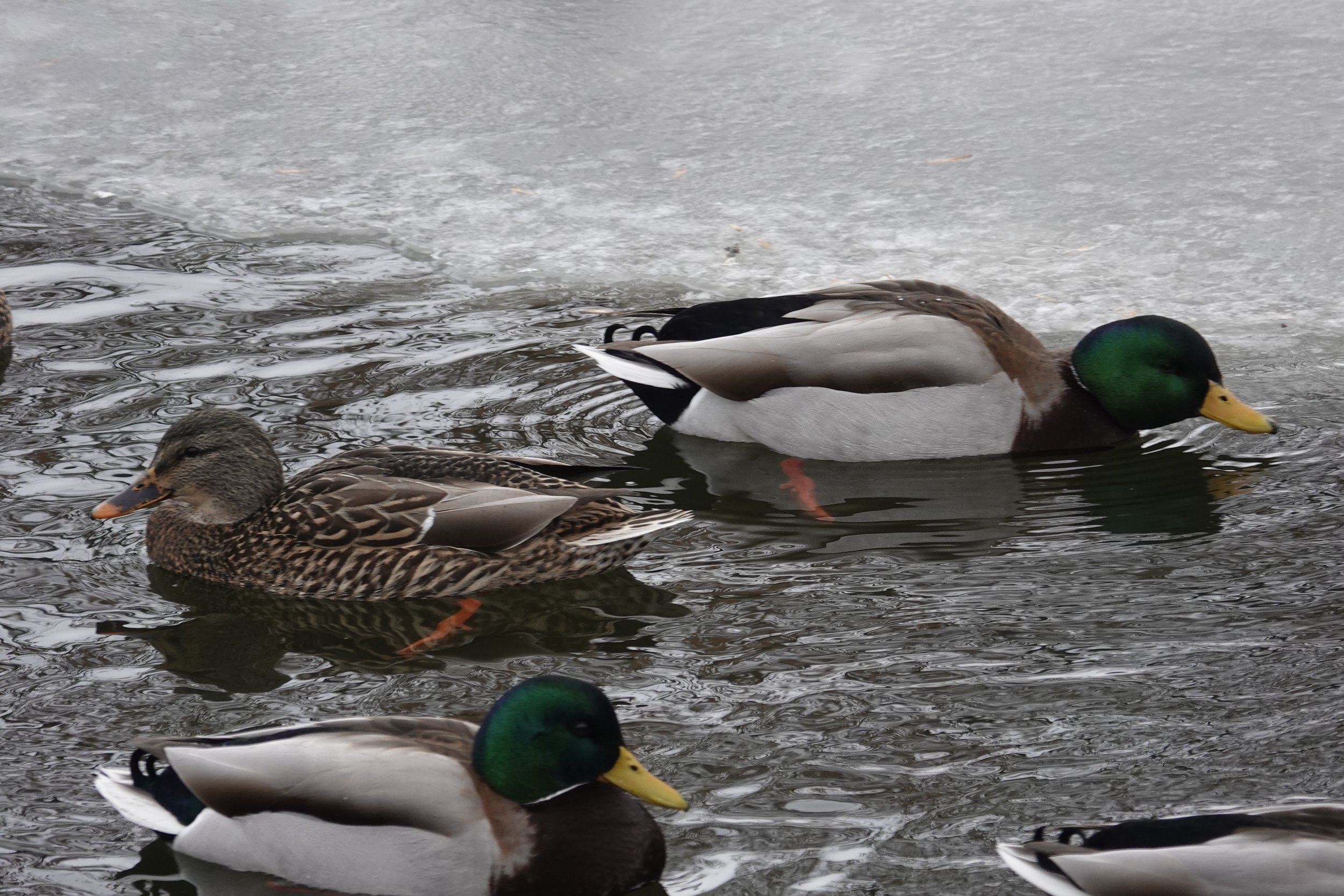Naturally
It was -14°. It was so cold Jack Frost quit and nose hairs were snapped off. I used a fur-lined teacup and welcomed warm thoughts. Winter is for the birds. The crows expressed their displeasure at the presence of a raptor. The blue jays had stolen the colors of the sky on a sunny day and of the water when it was ice-free.
It reminded me of a similar day in Southeast Alaska that offered all the things people want in a day—deep snow, cold and ice. I wandered alongside a river, pointing my camera at worthy subjects and there were many worthy subjects. There was enough spawned-out salmon for everyone. Crows, ravens, magpies, gulls and bald eagles fed at the buffet. I know we’re told not to anthropomorphize, but I think doing so can add to our understanding. I watched a bald eagle eating with gusto. It was taking the advice of an old Schlitz Beer commercial that said, "You only go around once in life. So, grab for all the gusto you can." Its epicurean delight attracted the attention of other birds, including other eagles. Humans display similar behavior. Somebody else’s lunch often looked better than ours when we were kids. As adults, we’re enjoying our food at a restaurant until we see what someone else is having. “I should have ordered that,” we think. The owner of the salmon repulsed any attempts at fish thievery. A bold raven snuck up on the eagle from behind and yanked its tail. It did this several times until the infuriated eagle reacted. When it did so, a gull grabbed the fish and dragged it off where a squabble of gulls fought over the delicacy.
The bald eagle, freed of the responsibility of a fish dinner, flew into a tree and preened. The gulls continued to battle for control of the salmon. The eagle, having had enough, flew down from its perch and dispatched one gull, as the remaining gulls fled the scene. The bald eagle flew back to its perch and continued to preen.
The tail-tugging raven got the salmon.
Why we have evergreen trees
When I walk on a cold, windy winter day, I appreciate the evergreen trees for their good work in blocking the bitter winds. There is a Native American folktale about a sparrow with an injured wing. He was unable to fly south with his flock as winter approached. Despite that, the sparrow continued to sing his lovely song. When the first snow fell, the sparrow became desperate and sought shelter and warmth in the leaves of an oak tree, then a maple, an elm, a willow and an aspen, but each tree had a small heart and rejected the tiny bird with considerable rudeness. The pine tree, however, welcomed the sparrow and apologized for its sticky branches and needlelike foliage. The pine tucked the little bird comfortably into a sheltered and welcoming branch. When his flock returned in the spring, the sparrow's wing had healed. The Creator admonished the trees that had so much but refused to share. The Creator proclaimed those trees would lose their leaves each winter, but because the pine tree had shown compassion, it would remain green all year.
Q&A
“What should I do if I find an injured bird?” Make the bird as comfortable as possible and call the Wildlife Rehabilitation Center of Minnesota, located in Roseville, at 651-486-9453. If you find an injured raptor, contact the University of Minnesota Raptor Center at 612-624-4745.
“Why do I see robins and mourning doves here in the winter?” There are migratory robins and there are those that don’t migrate. Scientists are studying the migratory robins and the resident robins, finding they interbreed little. There may be genetic differences. Overwintering robins tend to travel in flocks of 40-50 birds and reside in ravines and other wooded areas where they have an open water source. They can be nomadic and move to where there is an adequate supply of food. Robins survive in the winter on the fruit of trees like buckthorn, crabapple, cherry, mountain ash, hackberry and hawthorn. Robins seldom visit feeders but might eat raisins, currants, blueberries or small pieces of suet placed on the ground or platform feeder. Most mourning doves move south, but some are year-round residents in the southern part of the state. If they find food (cracked corn, millet or safflower seeds at feeders) and water to drink, they can withstand winter. Off the subject, a dove has a structure in its throat that produces pigeon milk or crop milk for nestlings. The milk looks and smells like cheese and has some nutrients found in cow's milk.
Thanks for stopping by
“As the pressure of population increasingly regiments us and crowds us closer together, an association with the wild, winged freedom of the birds will fill an ever growing need in our lives.”—Edwin Way Teale.
“In nature, nothing is perfect and everything is perfect. Trees can be contorted, bent in weird ways, and they're still beautiful.”—Alice Walker.
Do good.
©️Al Batt 2022
The Harris's Sparrow is the only North American songbird that breeds in Canada and nowhere else in the world. It was named after Edward Harris (not the actor), a friend of Audubon, in 1843. Thomas Nuttall had named it the "Mourning Finch" in 1834. Photo by Al Batt.
I tried to get my ducks in a row, but it was like herding mallards.


